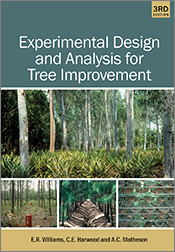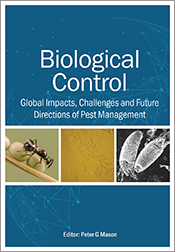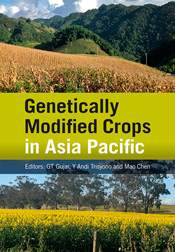Growing Crops with Reclaimed Wastewater
Edited by: Daryl Stevens
The definitive Australian reference on the principles of using reclaimed wastewater for agricultural purposes.
This comprehensive work examines the fundamentals required for reclaimed water schemes to deliver sustainable farming operations that achieve the yield and quality of produce necessary for acceptance in the market. + Full description
Growing Crops with Reclaimed Wastewater reviews the historical background of water treatment, its use and disposal from Australian wastewater treatment facilities and the technologies now utilised to treat our wastewater for reuse. The major concerns of chemical, physical and pathological qualities of reclaimed water are addressed, ensuring that the environmental, economic and social requirements of today’s society are met.
It reviews the state and national regulatory requirements and guidelines that have made Australia a world leader in the management of reclaimed water and also examines the guidance in the United States of America (Federal) and in California, the World Health Organization guidance and the situation in Israel.
This is the first time such a definitive review has been produced on the use of wastewater for horticulture and it will be a key tool for decision makers, researchers and practitioners to understand the main issues and constraints. It will be of particular interest to agricultural scientists, waste and horticulture consultants, engineers, planners, state agencies, environmental officers and students.
- Short descriptionNews
No longer available in a print edition.
Reviews
"The information provided is factual, logically and simply presented and backed by useful charts and tables… The information provided… is important to everyone who grows plants, from the humble backyard gardener interested in the science behind maximising plant growth, the kitchen gourmet committed to cooking with freshly picked vegetables, to the proud male wanting to use greywater to display the greenest lawn in the street."
The Water Journal, Australian Water Association
Features
- Gives a comprehensive outline of the use of reclaimed water in Victoria, NSW, Qld, SA, WA and Tasmania.
- Reviews the regulatory requirements of key jurisdictions including Australia (State and National), the United States (federal), California, the World Health Organization and Israel.
- Provides an overview of wastewater treatment processes and opportunities for its use.
- Evaluates the suitability of different irrigation systems for horticultural crops using reclaimed water.
- Investigates the effects of saline-sodic irrigation water on soil properties and plant productivity.
- Examines the potential risks to the environment and human health from inorganic and organics in reclaimed water.
- Has up-to-date information on the social acceptance of using reclaimed water for agriculture.
Contents
PrefaceDefinitions and abbreviations
1. Australia and reclaimed water
2. Australian and international reclaimed water guidelines: The fundamentals
3. Wastewater reclamation processes
4. Opportunities for reclaimed water use in Australian agriculture
5. Crop nutrition considerations in reclaimed water irrigation systems
6. Design and management of reclaimed water irrigation systems
7. Soil salinity and sodicity
8. Managing risks to soil and plant health from key metals and metalloids in irrigation waters
9. Managing risks to plant health from salinity, Na Cl and B in reclaimed waters
10. Organics in reclaimed water and their potential risks to the environment and human health
11. Environmental implications of reclaimed water use for irrigated agriculture
12. Managing health risks to consumers
13. Social psychological considerations in the acceptance of reclaimed water for horticultural irrigation
Index








